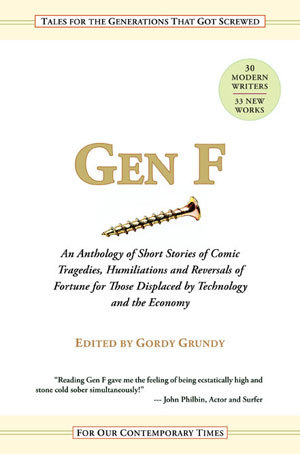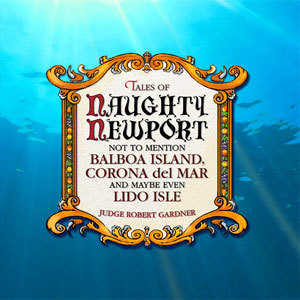Merchandising is a business-retail discipline that is rarely applied when self-publishing a book. The principles of selling a product or a brand can and should be utilized in your publishing efforts. This complex action demands a mindset that is often unfamiliar to the freethinking creative author.
Merchandising is the siren song of a product; it is the hook with mouthwatering bait designed to attract your attention, to enthrall your senses and to compel you to act. Merchandising is a complete, thorough and detailed study, a sum of many parts. Merchandising is about details and small percepts to influence a decision.
A book -- fiction, non-fiction and educational -- is a specialized product type with its own set of considerations and availabilities. Following are a set of merchandising attributes that every professional and amateur publisher should consider. These are ordered by their priority of influence. 
To state the obvious, the name of a well-known and much-beloved author is the epitome of book merchandising. Beyond that, it gets tricky.
Much has been written about the importance and the appeal of the book cover, myself included. (Click Here for a related piece.)
Does the cover catch your eye? Does it hook your imagination? Is the graphic style consistent with the contemporary marketplace? Today, in our world of small self-publishers with small budgets and smaller creativity, the book cover has never been more paramount.
To compose a successful book cover, one must cast an objective eye on your product's universe. Stories have genres, and non-fiction has categories. Each identifier has a set of specific rules that must be obeyed.
Innovation and success comes when the rules are played well and then broken. A quarter turn to the creative dial of a genre usually produces fascinating results. As a chef creates a reduction, a great book cover will express the emotional core that flavors the book. This is how you want to present your cookbook, space odyssey or western bodice-ripper: full flavored. Book buyers have an expectation that must be matched, as well as the hope for a fresh approach and appeal.
Cover art employs all of the usual suspects of merchandising. Color theory applies. An embossed title affects touch. Visibility and sight approach determine your placement on the bookstore shelf or digital platform. The success of a book cover is determined faster than the blink of an eye.
Most of us need help to see. An author or a creator builds a world from their imagination. Throughout that brave construction, a creator must also manifest self-support, fuel and encouragement. These investments are dangerously helpful. Authors tend to believe that their work has the potential to redefine literature and become a bestseller. This blinder will see a book to conclusion, but it will not aid the marketing and merchandising process. When presentation is everything, objectivity must be the transcendent mantra.
The term "outside the box" has been so overused that it demeans the true brilliance of a successful innovation. In order to think unconventionally, one must understand the micro and the macro of a universe. Unlike a learned skill, objectivity and perception in merchandising are true talents.
The title of a book and the name of the author are in constant competition for attention. A clever title compensates for the obscurity of an author. A well-known and much-loved scribe is money in the bank.
The title of a book is a complicated, and often intractable, affair. Most authors know their new tome title before they ever write a word. In my work with writers, it is far easier to cut a whole subplot than suggest a change to the title. 
The book title must be understandable. If the title is fantastic, it must be easy to read and pronounce; you do want it to spread by word of mouth. If there is a hint of meaning or thematic direction, all the better. Active or passive, your title should engage appropriate to your written words.
Again, cover iconography is meaningful in relation to the title and the successful merchandising of a book. The image of a clock on a dusty mantle of an empty English estate, or a timer strapped to dynamite, conjure different perceptions and audiences for a book titled The Hours. There is an old axiom in publishing circles that a Nazi swastika on the cover will produce a sales increase of 21 percent.
The name of an author is a merchandising factor, seeing as it determines credibility. Would you rather read an international, action, spy thriller by Dirk Bicep or Wally Adenoid? A medical mystery or diet book is not credible unless there is a MD after the author's name. If your book is about necrophilia, and written in the first person, a morbid pseudonym is highly suggested.
An author's name can be a strategic decision. The world knows the writer of the Reacher novels as Lee Child. His wife first knew him as Jim Grant. "Although I'm in a creative endeavor, it's also a business, a job," the thriller bestseller says in a DoSavannah.com article.
To have a name that is easily heard, understood and repeated is good... Child is a regular noun, but it produces warm connotations. More crucially, it's in the front of the alphabet. When it comes to bookshelves, it's a good spot to be in.
Next time you are causally browsing, you will see that Child is very correct.
Cover quotes and words of praise are essential to a book. We do not need to read them, yet we need to know they are there. The shape of a superlative is unmistakable. Like an inverted pyramid, the top lines, bordered by quotation marks, rest on a dash, a name and a designation. We are visually accustomed to the device.
A quote from Mick Jagger is more impressive than one by surf crooner Jack Johnson. There is a hierarchy to celebrity and public awareness. Working with a client, I ask: "Who do you know?" and then we file down the list. At the end of the day, an interesting and compelling designation has value. I recently crowned a cover with:
"The Chroma is awesome!"
-- Rattlesnake, Rainbow Elder
Now, that's catchy!
The blurb or description of a book, usually found on the back cover, is a key sales opportunity; it is a closer. Cover art will intrigue and beg for additional consideration and information. A crisp blurb should snap like a bat sending a baseball on a home run; it will make the sale. Three paragraphs is a maximum; two is preferred. Brevity and conciseness will win the game. (Designers Note: One does not want the back of a book to be crowded. If there is too much copy, no one will read it. Empty space directs the eye.)
A blurb is part description and part hullabaloo. The copy demands the talent of a showman. A promoter has the innate ability to draw the key elements from a book and emphasize them in a fresh and creative way. Heart-pounding action. The sacrifice of a loving mother. A race against time. Bloodlines through the ages. Erotic tension. These sales points must be conveyed quickly and hotly, for a sale is at stake. 
I am of the opinion that an author cannot and should not write this necessary and valuable statement about their work. When one is so focused on the leaves of a tree branch, the view of the forest is otherworldly. Author Michael Delgado thinks you will like his upcoming novel Super Sabado for the insights of Latin immigration and assimilation; I think you'll like it because it is hysterically funny. Most authors cannot see the populist selling points of their work.
This sentiment applies to an author's biography. Recently, a medical doctor client insisted on writing his own bio for the "About the Author" page. To an audience of medical practitioners, the four paragraphs were impressive. To the target audience of everyday back pain sufferers, the bio was long and unintelligible. His victories had no context or value, unless you were a PhD. The opportunity to impress and enhance the credibility of the author was lost.
An author's biography is a merchandising tool. The goal of the paragraph is to create an association and familiarity between author and reader. The words must also establish credibility with the subject matter. The biography of Nicholas Sparks, the romance writer, is appropriately warm and cozy. It is best if the author of a war novel have military experience. A strong author's bio should be as extensive as a cocktail party introduction. Over-sharing is a negative; if you do not like the author, you will most likely not like the book. As in all relationships, a little mystery is a good thing. Readers will ponder the lives of their favorite authors, for reading is an intimate act.
Fame is a merchandiser's dream. Fans will respond. I do not need to know anything about author John Kennedy Toole's new book; I just want it. "Bestseller" is an overused term, usually applied thick, yet it still resonates. Even better, "New York Times Bestseller" never ceases to impress; the credibility is instantaneous and universally recognized.
Pricing is a merchandising issue, and a massive theoretical business study. Books have an interesting relationship with price, as a book is above comparison. We will pay more for the novelty, curiosity and anticipation. One does not compare thrillers by price, but a high price for the much-desired new Ken Follett novel may stop the sale.
Limited edition, paper quality, color and packaging can price a book in the four figures. Genre affects price.
How to price a book? Is your book likely to receive a review in the New Yorker, or should it appear in the bookrack beside the supermarket cashier? What image and status does your cover art project? These are factors. Objectively, compare your book with others in the marketplace. If an Isaac Asimov reprint sells for $13.99, how much should you charge for your sci-fi? You do not want to be too high, nor, most definitely, too low. Allow room for discounting. Amazon and web retailers automatically and randomly offer price discounts on your work. As you build an audience, you may want to offer perks and freebies to your base, adding an expense to the bottom line.
As in all things, size matters with a printed book. A thick printed book of many pages looks substantial, and far more intellectual than a thin pamphlet. A book with less than 200 pages appears suspect. Word count is superfluous, as a clever designer can add pages with leading, kerning, art and wider borders. A thick book warrants a higher price, as it ostensibly offers more. With an eBook, size matters not at all. Reading a Kindle or a tablet at a coffeehouse will not impress a mate as much as a thick copy of War and Peace.
In our digital world, books are becoming shorter. As more and more authors have entered the marketplace, the competition for acknowledgement and awareness has increased; the swimming pool has become very crowded. In order to generate more titles and hullabaloo, authors are writing shorter and releasing faster.
As important as sentence construction, spelling and insight, merchandising is an undeniable factor in the success of a book. We all know that true talent resides on the page, inside the covers, but we will never know the greatness of a writer unless we are first attracted by the merchandising.
Gordy Grundy is a writer, publisher and author advisor. His visual and literary work can be found at www.GordyGrundy.com.

